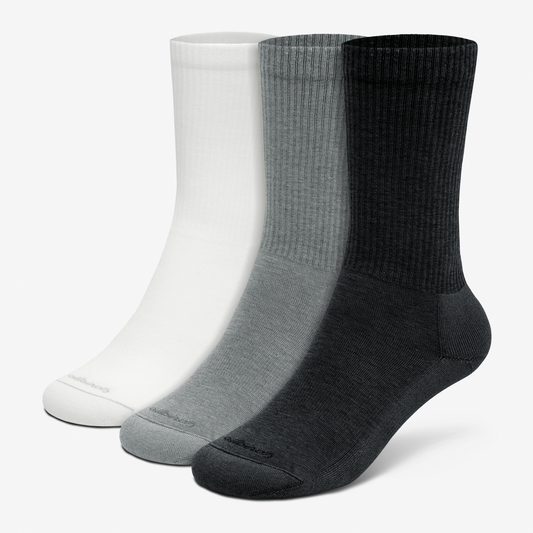Congratulations on taking up running! It’s an exhilarating workout that you can do just about anywhere. Getting into running can increase your energy, boost stamina, benefit your heart, and even help you sleep better at night.
To help you get started, here are four steps for beginner runners to follow as you take on this new challenge.
Step 1: Work up to running
Running can seem daunting because it can get uncomfortable, fast. The best way to feel ready for your new running habit is to slowly work up to longer running sessions.
Try these tips:
-
When doing cardio workouts, whether that’s walking, cycling, elliptical, or other activities, increase your speed and intensity. Try to get your heart rate up to 155-165 bpm (beats per minute) and sustain it for 5-10 minutes or more at a time.
-
Alternate between walking and running on your next outing. Push yourself to extend the running portions as long as you can. .
-
When you’re ready to do your first runs, aim for ½ mile-1 mile at first. (Hopefully, your memories of running the mile in school aren’t terrible, but if they are, get ready to replace those memories with new, better ones.)
Try this 6-week plan to start running as a beginner
Week 1 Run ½ mile. Walk ¼ mile. Repeat. Do this 2-3x this week.
Week 2 Run ¾ mile. Walk ¼ mile. Repeat. Do this 2-3x this week.
Week 3 Run 1 mile and celebrate! Do this 2x this week.
Week 4 Run 1 mile. Walk ¼ mile, then see how far you can run as a second leg. Do this 2x this week.
Week 5 Run 1.5 miles or more. Do this 2x this week.
Week 6 See if you can reach 2 miles with a combination of running and walking. You’re ⅔ of the way to a 5k!
What pace should a beginner run?
Aim for what feels maintainable. Think low 5’s mph (5.1, 5.2, etc.) as you start out.
If you’re finding it hard to catch your breath or your heartbeat is going higher than 165-175 bpm, you may want to scale things back. Slow down a bit and try to find a pace that still feels challenging but sustainable.


Step 2: Use good running habits
Just like with any new hobby, you’ll need to get used to the practices that surround it. Learn good habits now to avoid injury, dehydration, sunburn, and the enemy of any workout—boredom.
Now that you’re upping your pace, make sure you hydrate before and after your run. It may be tempting to enjoy your morning coffee and then hit the road, but your body will perform better with a tall glass of water 20-30 minutes before the run.
If you’re running outdoors, apply sunscreen, pick a hat to shade your eyes and face, and learn how to stay safe while running on the street. If you are trail running or coming in and out of wooded areas, you may want to spritz on some bug spray as well.
Warm up carefully. Here are some stretching and warm-up moves to try:
-
Start by doing torso twists or cat-cow moves to loosen up your back muscles.
-
Go into a downward dog to loosen up your hamstrings and calves.
-
Do a pigeon stretch, or, when standing, pull your knees up to your ribs and hold for a few seconds. Both of these moves stretch your hips and glutes, which you’ll need for climbing those hills.
-
Hey, you’re a runner now, so do a runner’s lunge! With one foot forward and one foot back, shift over your front foot until your back leg is straight and your front knee is positioned directly over your foot. This will get at your inner thigh, hips, and hamstrings.
Stretch after every run as you cool down.
-
Quad stretches feel marvelous after a run.
-
Stretch your hamstrings by reaching down to your toes or repeating the runner’s lunge.
-
To loosen up your shoulders, arms, and chest muscles, rotate your arms in a swimming motion or give yourself a well-deserved hug and then fly out your arms. When running, your arms are somewhat tense and held in the same position, so these movements will probably feel heavenly.
Rest! Don’t try to run every day, and don’t push so hard that you’re sore every day. Your body needs recovery time between runs, and you’ll be able to attack the next run that much more fiercely if you’ve rested. In between run days, try yoga or stretching sessions, as well as strength training.
Step 3: Keep a log and celebrate accomplishments
Now that you’re finding your stride as a runner, celebrate your improvements! Pat yourself on the back (or high-five your mirror) for every new distance reached, for trying a new, challenging route, and for seeing what your body can do.
Some athletes like to keep a log so they can see their journey unfold in writing. There are also many fitness apps that can log your stats for each run and present new challenges for you.
And remember, progress is not always linear. Be kind to yourself when you have a tough day or don’t feel up to a challenging run. As your body responds to this new activity, you will get stronger over time. So, by all means, enjoy the journey.
Step 4: Get the right gear
You can’t go very far on faulty shoes (and even if you do, it will be a miserable experience). A foray into running is more likely to be successful with the right running gear. Getting shoes that perform well and support your feet will keep you comfortable and stable—making your runs much more enjoyable.
For the sake of your feet and your overall commitment to running, visit our full line of running shoes. From lightweight Tree Dashers made with eucalyptus fiber to our line of cold-weather running apparel that keeps moisture out and warmth in, Allbirds can help you stock up on your new favorite running gear. For even more on how to choose the right gear, visit the best running shoes for beginners.
















